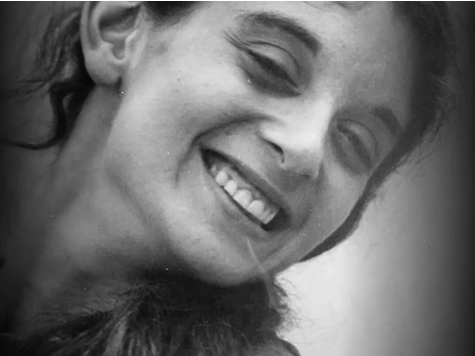
Today Vicki Pollack is known as the legendary founder and director emeritus of the San Francisco Bay Area-based Children’s Book Project, the non-profit organization that has provided over 2.9 million “gently used” books to local kids since 1992. But in late 1967, Vicki was a directionless, 25-year-old college graduate and Civil Rights activist who’d left her welfare worker job in New York City to move to the Bay Area in pursuit of something more.
She found it in February, 1968, when she walked into an extraordinary old Victorian house on Willard Street in San Francisco. Some Diggers were living there, plotting to expand the audacious social liberation work they had spontaneously begun in the Haight-Ashbury district just 17 months prior. Now they were setting their sights on the whole of San Francisco.
Actor Peter Coyote and the late Emmett Grogan are the usual names associated with the Diggers, as they wrote books chronicling their participation in that era; Grogan’s Ringolevio is the most notorious. But there were many others, like Vicki, who participated in the various Digger initiatives of the time, and whose stories — and unique perspective and insights — have never been told at length, or in any detail, in public.
With that in mind, it gives me a great deal of pleasure to share this interview with Vicki, constructed from two conversations I had with her in San Francisco in 2010. There has been some editing for clarity, but for the most part, this has not been edited down for a general audience, and many incidents and personages are spoken of without context, or only in passing. As always, my advice to the casual-but-curious reader is to simply let these unfamiliar/unexplained bits pass. Keep reading, you’ll like the next part.
This presentation has been prepared in extensive consultation with Vicki. Any errors of transcript are mine, and notice of any corrections of fact would be greatly appreciated. This is the fifth interview in my series of Diggers’ oral histories; the others are accessible here. For more infromation on the Diggers, consult Eric Noble’s vast archive at diggers.org
Please note: I have incurred not insignificant expenses in my Diggers research through the years. If you would like to support my work, please donate via PayPal. All donations, regardless of size, are greatly appreciated. Thank you!
— Jay Babcock (babcock.jay@gmail.com), June 21, 2020
Jay Babcock: What is your background?
Vicki Pollack: I was born in 1942. I grew up in Virginia, which I loved, and then we moved to Maryland, which was much more rural than it is now. My mother was a housewife and my father worked as a lawyer for the National Labor Relations Board. I have two brothers and a sister. I’m the oldest. I was a typical ‘50s kid, except that I was Jewish in a school where people were prejudiced. Otherwise all my goals were the usual teenage girl goals: get good grades, be popular. I would love to have been a cheerleader.
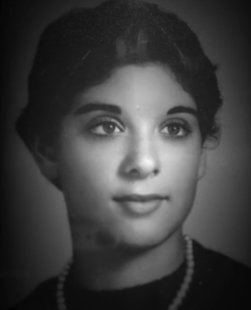
My family lived in a community that was basically a housing co-op. During World War II, there had been a food co-op in the area, and after the war, the members decided they were going to do a communal housing co-op. There was a golf course that was up for grabs, so they bought it. The community, which was called Bannockburn, wasn’t just Jewish. At the point that we lived there, it was probably 50/50. Every family there knew each other. They had meetings, they built a community swimming pool, they had this clubhouse. [See this fantastic 1986 Washington Post article for more about Bannockburn’s history.] I lived there from the time that I was 9 til I went to college. The people in Bannockburn were radicals. My parents were Democrats, but they were never big radicals. My mother gave some money to help the Spanish Civil War. That was all.
Nothing really seemed different about me growing up except that I was Jewish and I was living near areas that were very prejudiced against Jews. I did care a little bit about others, but I always thought I’d be a typical ’50s-style housewife, a mother. There was nothing growing up that would indicate that I was going to go in a totally different direction.
Where did things start changing for you?
Interestingly, Bannockburn was surrounded by areas where Jews weren’t allowed to live. The whole region was segregated. And in 1960, right before I went off to college, students and activists from Howard University started picketing the segregated Glen Echo Amusement Park, which was so close by we could hear the rollercoaster from our house. The whole Bannockburn community took part in the picketing and in supporting the demonstrators. It was part of the Civil Rights movement that was in progress then. It was dramatic: there were Black activists, there were American Nazi Party members, there were police.
I started that fall at the University of Wisconsin and came home for Christmas vacation, and got further involved in civil rights activism. There were plans to start doing anti-segregation sit-ins in Baltimore, which I wanted to participate in. I went to the workshop ahead of the sit-ins that was held in a small meeting room in a local church. Martin Luther King, Jr. taught the workshop.
Whoa.
At that point, he was just a person — he wasn’t Martin Luther King, Jr. yet.
Incredible.
When I started being on picket lines, at 18 years old, it was very exciting. I would participate in them all the time. But sometime later, when I was back at the University of Wisconsin, I found myself at a picket line and all of a sudden I realized I didn’t know what this picket line is for. I looked at myself and said, You better step back and think about what you’re doing: You’re picketing not for a cause but because being on a picket line is exciting…
I ended up graduating from Berkeley with a degree in English. While I was there, I’d been hanging out with one of my best friends who I grew up with, who was living in the Haight-Ashbury. It wasn’t yet the “Haight-Ashbury” but it was starting. The summer before the end of my senior year I’d gotten engaged to a guy in Washington. We broke up, and I moved to New York. I was a welfare worker there, and got involved in an activist group called the Real Great Society — there were amazing people at these meetings. Linn House, who later changed his first name to Freeman, was there. Abbie Hoffman was there.

But still, I didn’t really like New York that much. I thought there’s got to be more to life than this, there just has to be. And then one spring day, this guy comes in and he said, Come with me, you’ve got see the music and dancing going on at St. Mark’s Church. We got there. I smoked weed, and I just went out of my head, dancing. That St. Mark’s Church event made me realize I had to get back out to San Francisco. I broke up with my New York boyfriend, because he didn’t want to go, and came back to Berkeley in ’67, and got work in North Beach clubs. One day, around Valentine’s Day, 1968, I was walking down Haight Street and I bumped into Linn, who I hadn’t seen for two or three months, and he said, Oh we want you to work with us. [laughs] He and David Simpson, who I knew, were producing the Free City News and they needed help. He sent me to this really big, absolute stunningly beautiful communal Victorian house on Willard Street that had a whole extra lot for a yard. And that’s when I started meeting everybody.
To me, it was a magical world. I’d experienced some of it in New York and some of it in Berkeley and I’d experienced some of it in San Francisco. I was there at Death of the Hippie. But I’d just showed up at that event; at that time I didn’t yet know guys like Ron Thelin and Jay Thelin from The Psychedelic Shop, who were part of organizing the event. Frankly, when I’d got to the Haight in late ‘67, I was pretty disappointed because it looked grimy to me. But when I got to Willard Street, I met the people that I wanted to know my entire life. They were me. Linn was living there. Ron Thelin was sleeping in the living room. The Free City News was being produced in the basement. I got there, and I thought, Oh this is my home. This is where I belong. I said, I don’t care if you’re filled up, I belong here. I moved into the house and I became the dishwasher because I didn’t want to cook. We made dinner every night for maybe 40 people. It was unbelievably exciting. I’d lived on a kibbutz in Israel for a little while in 1966 and thought, If I’m going to do something like this, I’m going to do it in my own country. I wanted to see what was possible. And now, here I was, doing it.
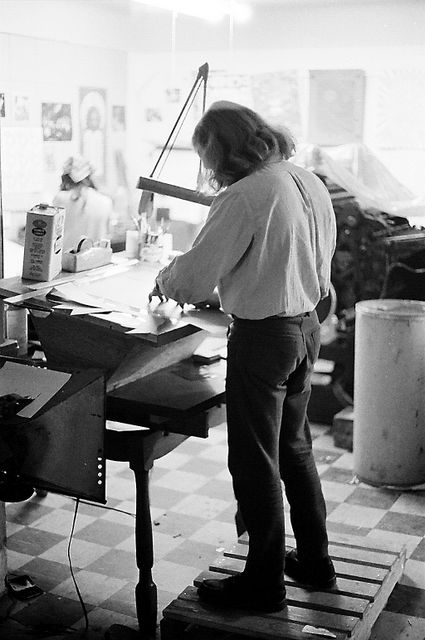
We did everything together. Nobody had regular jobs. We were sharing money. And we were partly living on welfare — I would get this welfare check for $45 every two weeks and buy my cigarettes and toiletries and give the rest to the house. We’d be living without money — and it was okay. We were sharing, especially the women more than the men.
The people that had got the house were Rose Lee Patron and Patty Davis. There were four or five women, and a man named Tom Dury. You don’t think of them so much as the Diggers, because Black Bear Ranch started soon afterwards and they went to live there, and then they went on and did other things with their lives. They were such remarkable women. They made sure the rent got paid. You always hear about Emmett Grogan, but do you hear about Nina Blasenheim? Nina was the person who made the food happen. She was very capable. And so beautiful. She’s not in very many of the pictures, but everyone wanted to marry Nina.
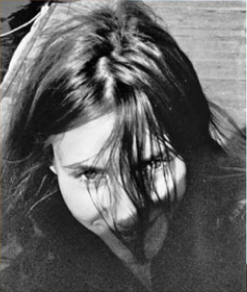


By 1968, the Diggers had evolved into talking — and being — the “Free City” Collective, or “Free Family.” There was the Free City News. They were planning a Free City Summer Solstice celebration, a Free City Convention. What were these “Free City” concepts?
When I got there, everything was already in process, and I had to figure out what it all meant. “Free” this, “free” that. They were going to the food market to get the food that would be prepared for free meals in the park, they were starting the first Free City Convention… There was so much going on, and everybody took part in different things. People just did what they wanted to do. For example, for a while we’d go every single day to the City Hall steps and read poetry, and pass out leaflets.



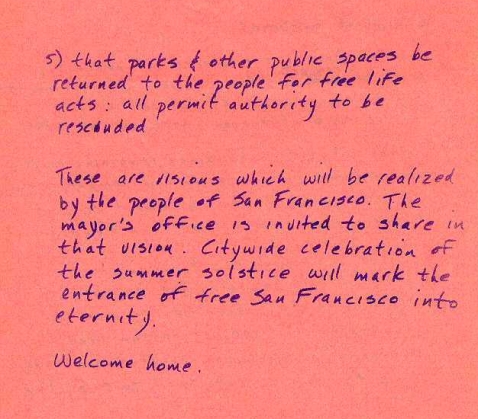
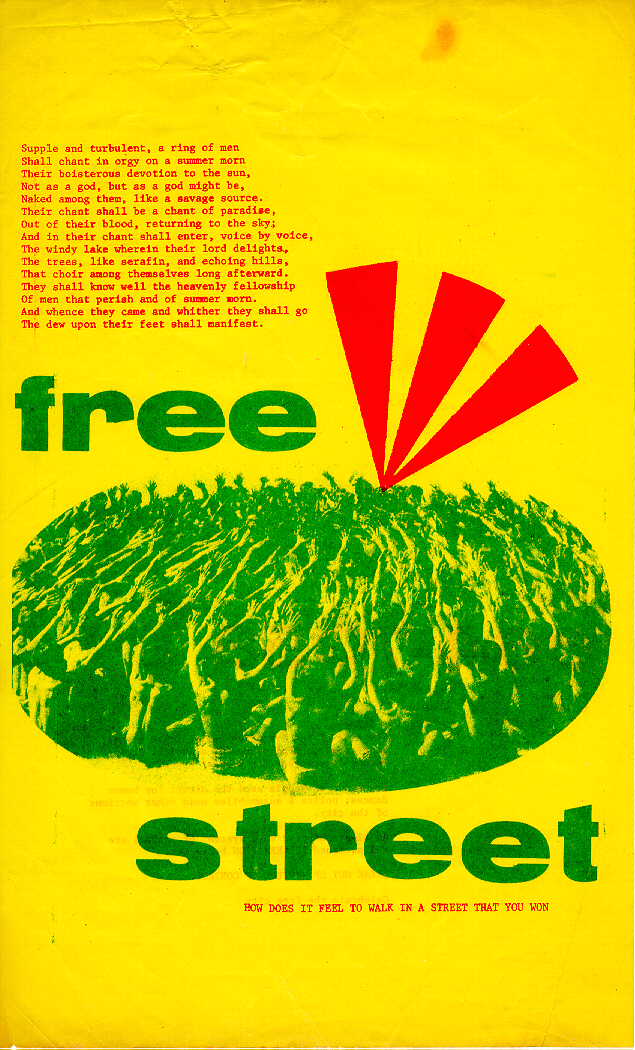
You have to understand how crazy we were. Ron Thelin and Ama got arrested for wearing those scarves, pretending to be Billy the Kid or something.
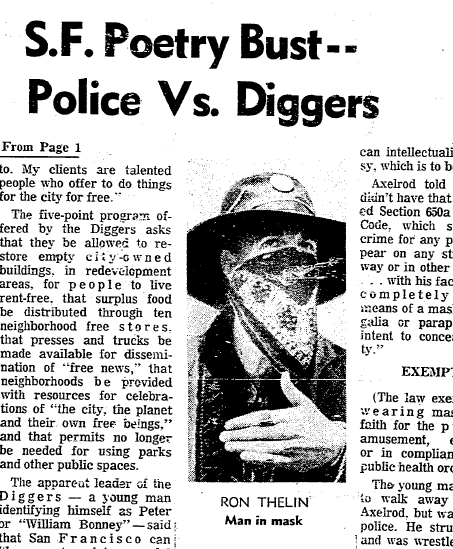
For the big Summer Solstice event, I helped with some of the advertising. Somehow I managed to get up really early, get a truck, and I got somebody to drive me around. I got helium tanks, and then I put way up in the sky bunches of balloons at each site. Up on Twin Peaks, and all over, there were balloons that I had put up, advertising the solstice—because the concept was we were supposed to be going into Eternity on the Solstice. Somewhere you’ll see it in one of the Free City News pages, it shows the different parks, the schedule.
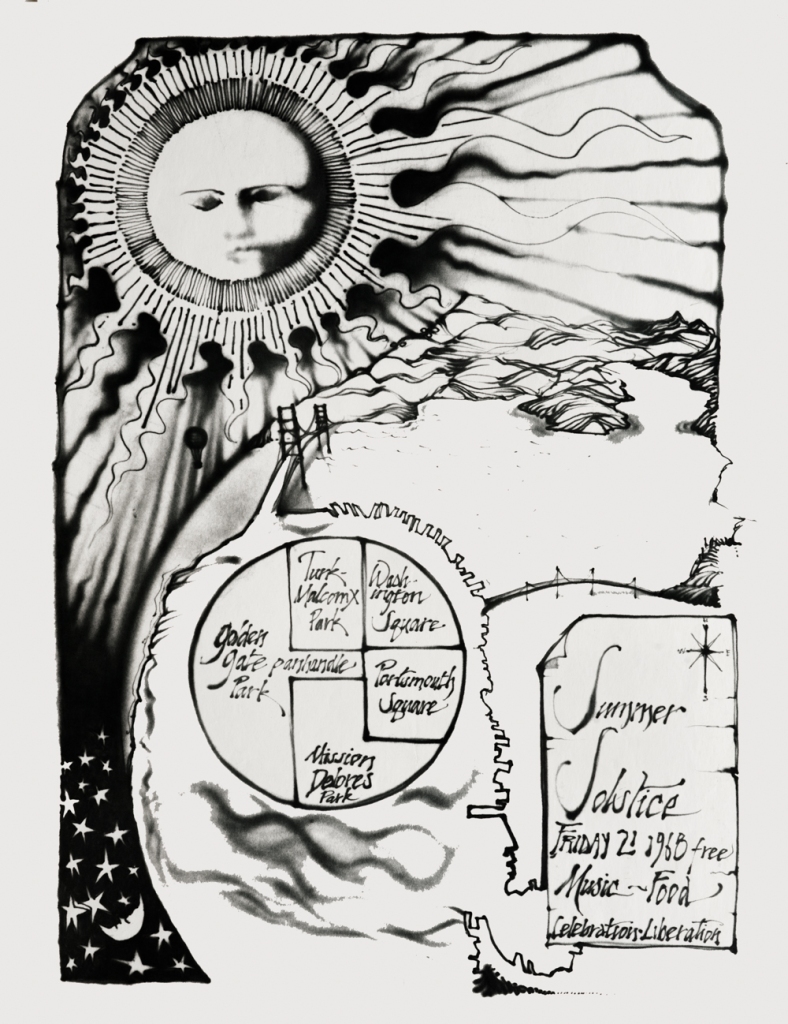
And so on the day, we went to each one of these parks, singing and playing and Ann and Bill Lindyn would do their Punch and Judy show… Just having a wonderful time. That symbolized how much fun those days were.

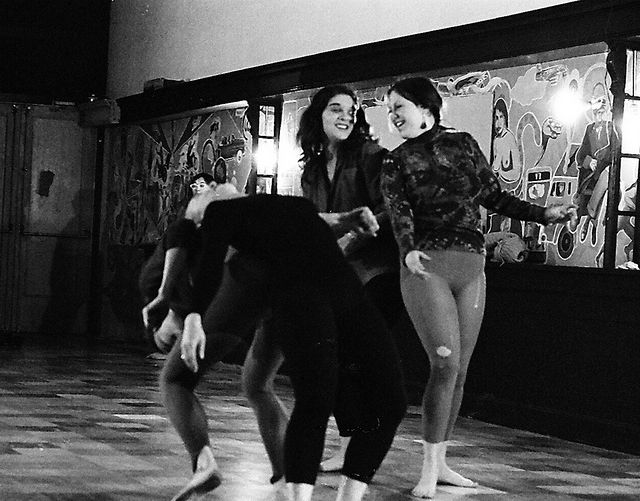
I was one of the bellydancers on this big bellydancing flatbed truck that was going through the Financial District at lunch hour. Lenore Kandel and Judy Goldhaft and Jane Lapiner were really good trained dancers. They led free dance classes at the Straight Theater. They were good dancers, and they had dancer friends, and some of them were on that truck. I was not one of the stars there, but I went out on this truck. I could not believe that people were actually going to work. I thought, What are you doing? How could you be going to work? It’s the Summer Solstice! Here, come, join us! We had so much fun.

Someone had got a cable car, and Bill Lindyn and I were on that, it went all over… I think it was before the actual day. It was just amazing, it drove around all the parks, people would get on and off. People singing.
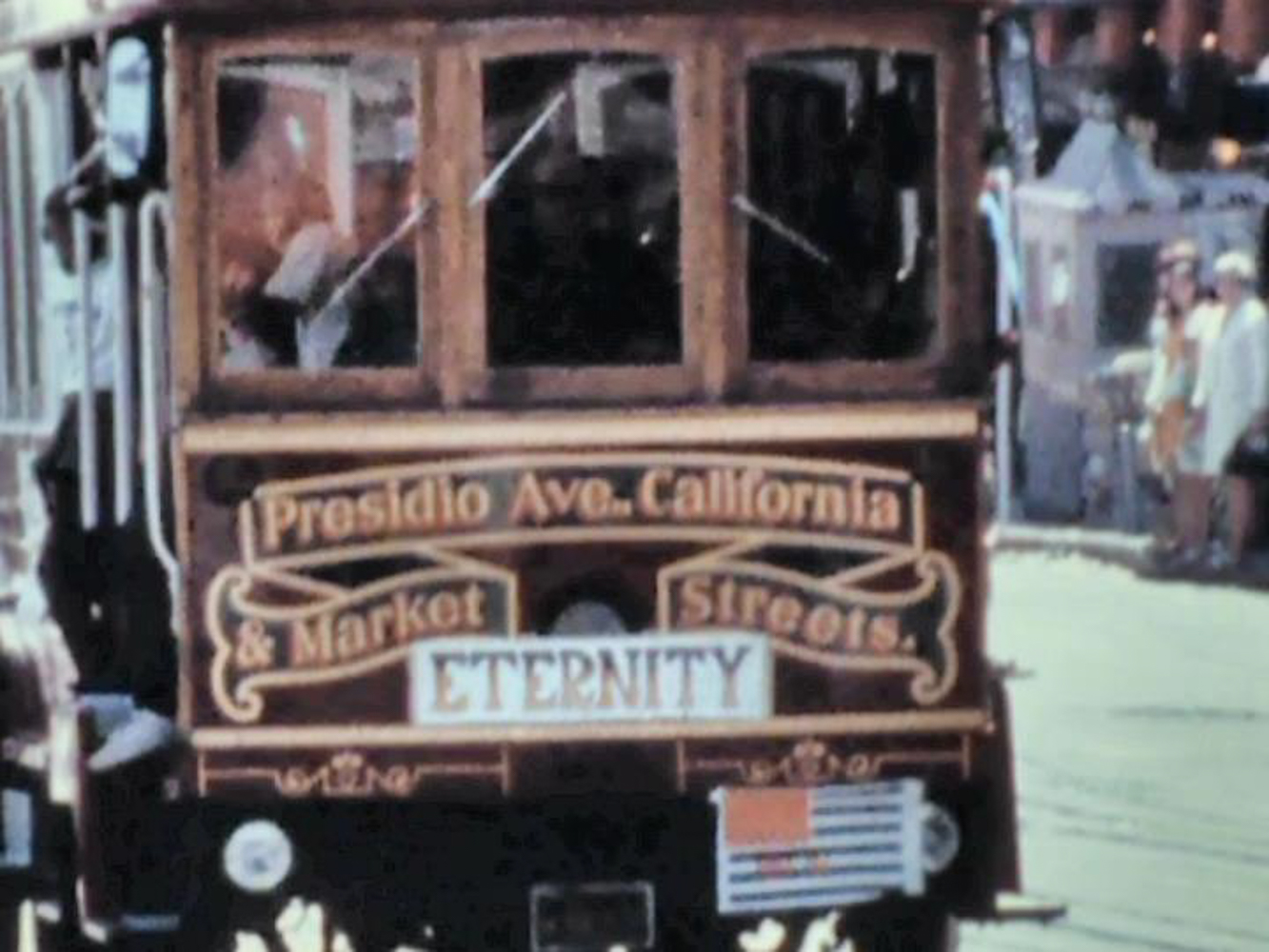
We did a free bakery. We were doing masses of bread baked in big coffee cans. I organized that at one point, made sure the flour was there. There was this big ranch down in Sonoma—maybe Novato—called Olompali, owned by Don McCoy, that had become a commune, and somehow we got involved with them. They had ovens. We went there and bake bread and swim nude, basically. Immense parties. And then we’d bring the bread loaves back to the city and distribute them for free.


You see burning of money in Nowsreal. Was that a common thing?
Not really. Back then, it was just the freedom—Oh, let’s burn the money. It was just like a symbol. But… You should do it. Try to burn a dollar. It’s an interesting thing to do.
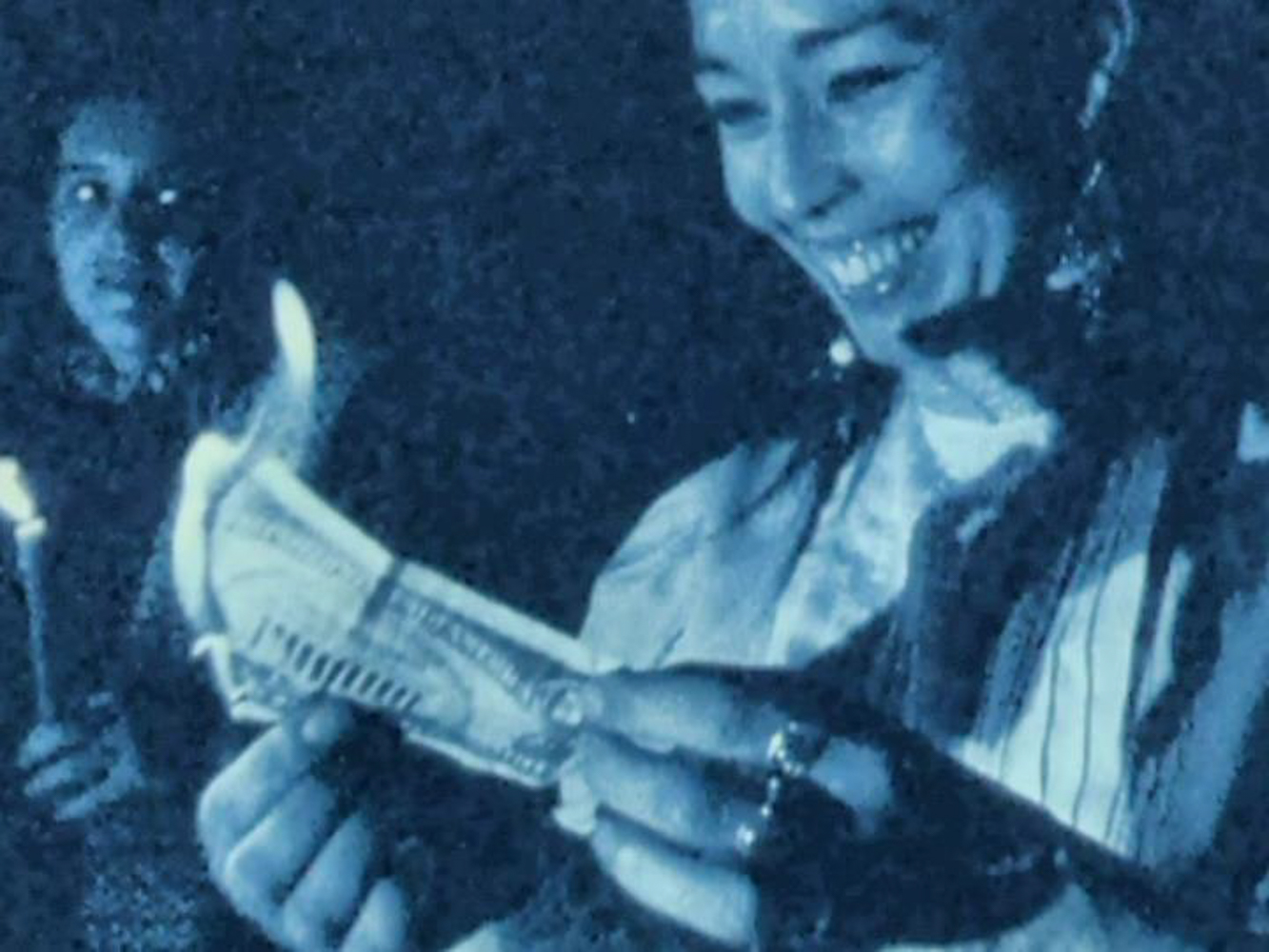
The Diggers were a pretty amazing heavy duty group of people. ‘Heavy’ was a compliment. Other people would be like ‘Oh you guys are so heavy’ —they were more like ‘We’re light, airy-fairy’ kind of stuff. You have to understand: People like Emmett and Bill Fritsch were so impressive. Peter Berg was probably one of the smartest people on the planet. And Freeman [House] was one of the most remarkable men I ever met. To me, he was pure, just…good. I am probably the most impressed with him. Just incredibly impressive, charismatic people. So they could get a lot from people. They started going down to L.A. for money.
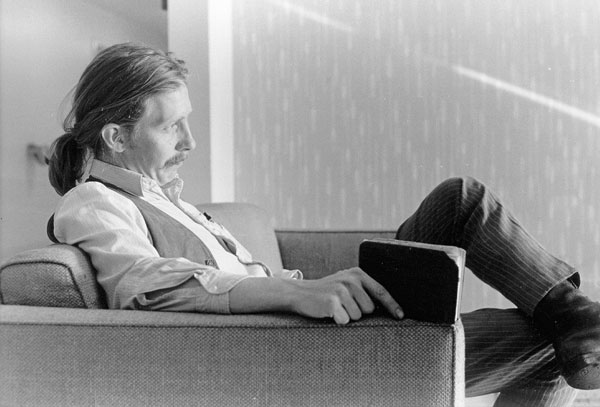
And Willard House was the center. It was like the hangout. Everybody came there. You never had to leave if you didn’t want to, and you got to meet everybody. All the poets came there. Janine Pommy Vega and Kirby Doyle and Lenore Kandel were frequent visitors. Artists lived there: Billy Batman, Bryden Bullington. Hells Angels came there. It’s where I met Peter Coyote and Sam, and Peter Berg, and Bill Fritsch [aka Sweet William Tumbleweed]. And Tony Serra. Frank Oppenheimer came to talk to us before he created the Exploratorium! All the musicians. People like [Grateful Dead co-manager] Danny Rifkin. Whenever we wanted to go to a show, any one of us could go to a show for free. When they did Carousel Ballroom, we had free tickets. So whenever we wanted to go down there and see anybody, we could go.

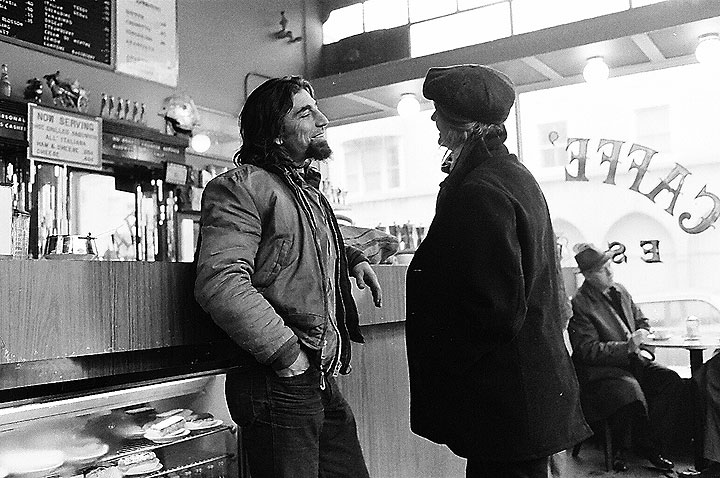

The women did a lot of the stuff. It was very sexist—the men were all talking and planning, but the women were handling it. Handling a house with 40 people. Making sure there was food. Making sure there was laundry. And eventually there were many, many kids involved. Little kids. I guess the most wonderful thing was coming out of my room in the morning in this beautiful house and seeing so many people I loved to talk to and work with and travel with and play with. Vinnie, Gail, Cathy, John Glazer, Rosie, Ron, Holly, Phyllis, Emmett, Nina.
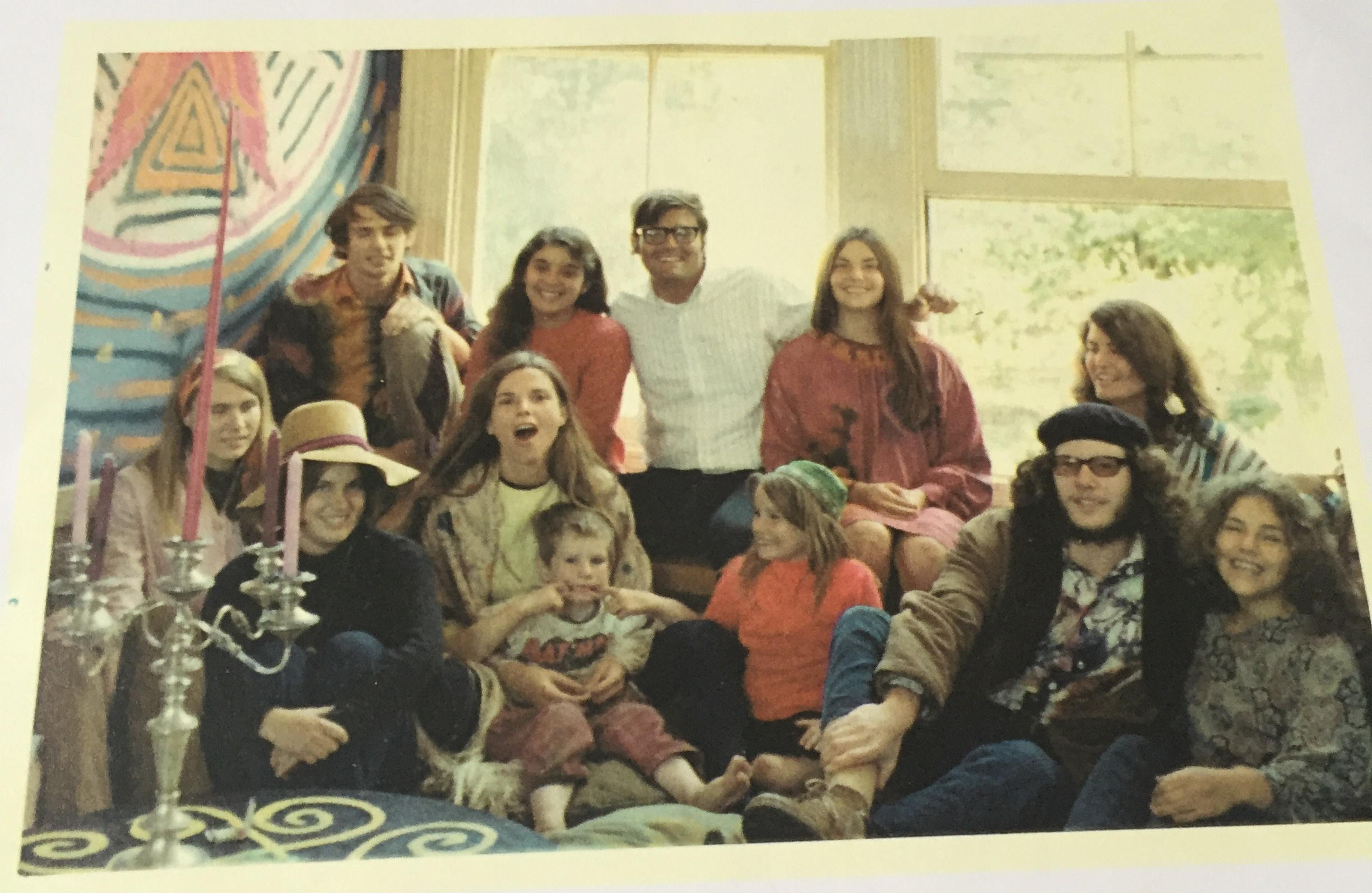
[Reading from a text she wrote in 1983] “My memories of Willard Street are so joyful. Learning how to tie-dye. I never liked doing it, I only did it once, but I loved to see the color of the tie dyes hanging everywhere. Learning how to clean squid. Eating whale meat on chocolate chip bread. Going on a motorcycle ride with Pete [Knell] of the Hells Angels…”
I’m going to throw some names out there of people who are gone, or who I haven’t been able to interview. You knew Richard Brautigan…?
A little bit. We did do things together. I put on an event with him in North Beach when he needed help. I really liked him. I loved his poetry. A lot of what went on at that point, was poetry.

How about Lew Welch?
I just liked him as a poet. He wouldn’t’ve known me, but I knew him. One time I want out to Olompali, I went out there and there was going to be a big party. I have no idea who I went with, but Lew Welch was there, and Magda his wife, and I was sitting at the table and whoever else I’d gone out there with. They were telling me about Magda’s straight son. You know who that was? Huey Lewis, who would become Huey Lewis of Huey Lewis and the News. [laughs] And at this party someone had spread white powder out on the table and we were all licking at it, all evening long. When people came the next day for this huge party, we were absolutely totally out of our heads, psychotic. I was flashing in and out of consciousness. People were three feet tall, going in circles. And Bill Fritsch, for some reason, anchored me enough that I came back to some extent. We didn’t know what we had taken. I had taken LSD before, but this was something else… [laughs]
Was LSD a big deal for you?
I took acid here and there. LSD wasn’t that important. It was never really big for me. It just wasn’t. I had already dropped out! I’d already done everything I needed to do, without it. I really didn’t like it.
A funny thing is when I came back from that party, my timing was absolutely perfect. I’d be thinking, Oh I want to go to Ashbury Street, and somebody would come in a car and be there to take me.
Bill Fritsch was an amazing man. Bill was in and out of Willard Street all the time. And Lenore Kandel was on the periphery. I was so much in awe of Lenore that I couldn’t even talk around her. The first time I ever saw Lenore, she was reading poetry, and she was reading Word Alchemy. I was just floored, it was so beautiful, the poetry. It was the first time I think I ever enjoyed poetry in my life. [See Endnote]
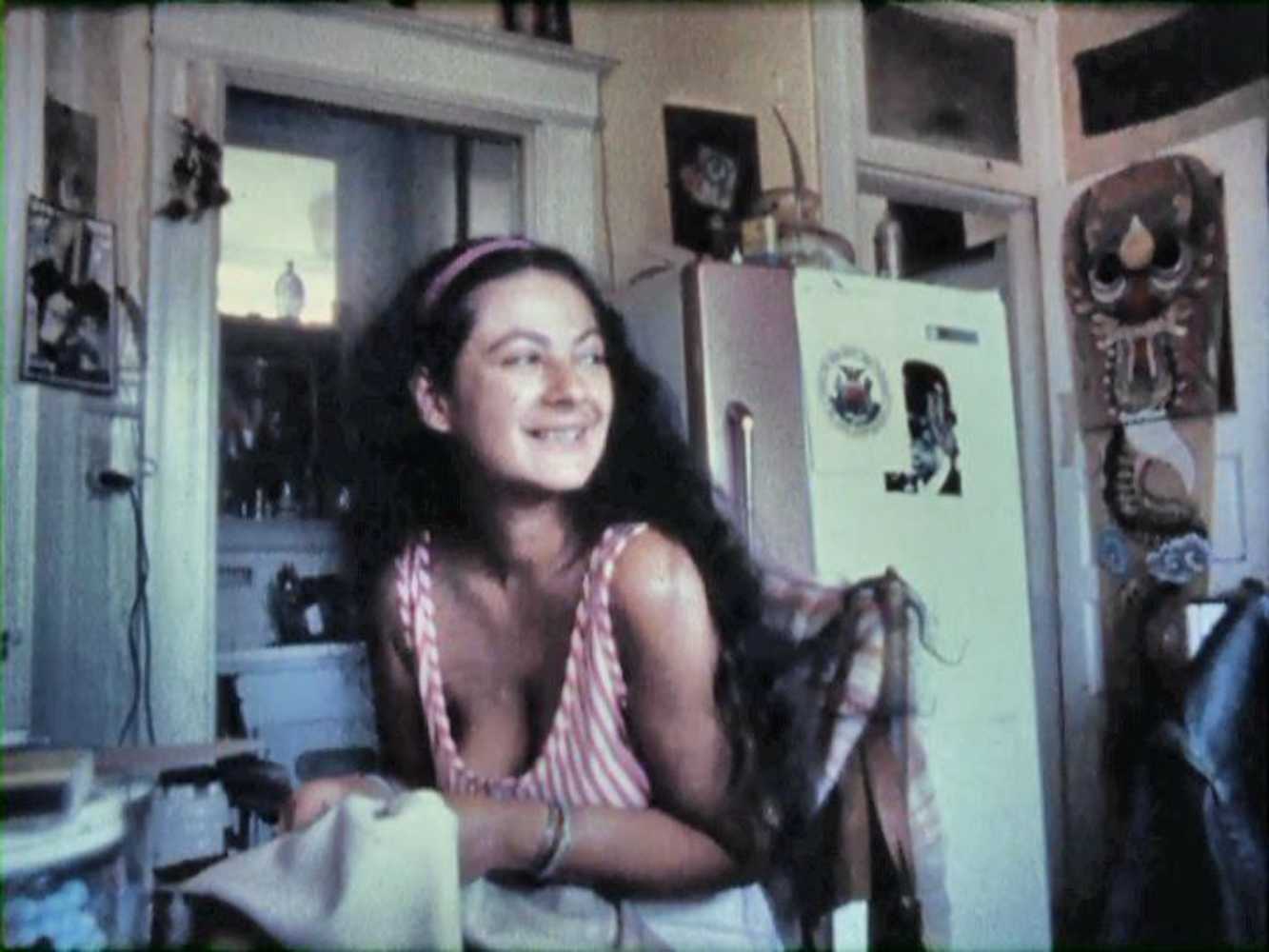
And then I met her—and I’m still like this around writers—and I shut up, I’m in such awe, I put them on a pedestal. I never got over it really until she was old. When she got old and I went and helped her shop and everything, then I got over it, I saw her as a person. And Bill, Bill was just…Bill was Bill. I wasn’t involved, though. I just thought he was the most handsome, sexy man I’d ever seen in my life.
I went to her place where we prepared for this huge seder at David Simpson and Jane Lapiner’s. People cooked for it. Lenore made things like I’d never seen before. I just remember this huge table, filled with food, and we thought at one point it was gonna turn into an orgy, but it didn’t. [laughs] Allen Ginsberg was there. It was quite the event, amazing.

The poetry world itself was so magical, because you had so many people at the events. Imagine poetry readings that were filling up halls with people. They really drew a crowd. It wasn’t like a reading at a coffeeshop. People were getting so high and clapping and shouting…. It was Beat poets like Philip Whalen, or Lew Welch [click here to hear Welch read at a “raucous evening” at Glide Memorial Church on June 8, 1968] or Diane di Prima or David Meltzer or Gregory Corso.

Who was Emmett Grogan to you?
He was so beautiful. I still dream about him. By the time I got there, he was already more distant. But, right before he died, we spent time together. He stayed at my house. We weren’t lovers — we were good, good friends. I don’t even know what to say about him. He was a beautiful man.
How about Billy Murcott?
I didn’t really know Bill Murcott. The person who knows is Phyllis. I’m really good with dates, but she’s really good with subjective memory. She’ll go, Oh it was Endless Time. Because to her, it was.
I never knew how people were connected to each other, because nobody talked very much about their past. All I knew is I could tell the people that belonged and the people that didn’t, it was pretty obvious. People did not talk about their past. You lived from that moment, so the things that today, looking back, things you would think people would have known about each other at the time, they didn’t.
[Reminiscing] There was so much going on. I was involved in something in Berkeley called the Six Day School. For me to get there, I had to hitchhike into the city, and get over there by the entrance to Golden Gate Park, where they picked you up. And they took you on a bus all the way out to Glen Ellen, which is where Jack London lived. It was far. First time I ever learned about nutrition, about how to to can and preserve foods, about psychic games. Everything was free. They would give these classes, and then they would take you back and drop you off. I think I went twice.
Who were these people?
I didn’t know — and I went, anyway! We were living free, and living without money. Here’s a story I love because it just shows how absolutely crazy we all were. I had this one little welfare check and every month I would buy my cigarettes and some Tampax and whatever I needed and then give the rest of the money to the house, and then I would literally live the rest of the month without money. Now, this friend of mine and I decided that we were going to go to New Mexico together. She had a scene—it was her, her boyfriend and her little two-year-old son and a dog. And she said, Come with me, I’ll pay. We barely knew each other, and I had no money, but I was so into the whole idea of Free, that I went.
And I had incredibly mystical experiences for the first time in my life on that trip. I saw people before I met them. We went to all these ruins in New Mexico, and I would feel what was going on, the history of the place. One day we got to this ruin and I said, You know Sarah I don’t feel anything here at all, this is strange. She said, Read the plaque. Nothing had happened there. All these kinds of experiences were happening and I was reading Herman Hesse’s Demian and it was the first time I learned that psychic stuff could be real. I’d been raised by a father who was very scientific, who didn’t think any psychic stuff existed.
It continued when I got back to San Francisco. It got so that I could call somebody psychically from across the city and have them come over and they’d say, What are you doing to me? [laughs] I went to Big Sur and I met a woman who said, I just fell off a cliff and a doctor was at the bottom.
Did you go to Altamont?
I was at both Woodstock and at Altamont.
Woodstock was so beautiful. The setting was so beautiful. My younger brother had gone early. He’d gotten food and camping stuff. I only went to Woodstock because I had a sister that was 16, and our mother had told her she couldn’t go unless I went with her. I was 27 at this point. We were up in the country with the family, and they dropped us off, 11 miles from the site. I loved Woodstock because I did nothing but sit there with my mouth open, listening to the music — I wasn’t a Digger, I didn’t help Wavy Gravy, I wasn’t helpful.
So, Altamont. Pete [Knell] didn’t go. Phyllis and I went down on the bus with the Hells Angels. There was this guy Moose, who we dropped acid with. We got down there at night, and remembering Woodstock, I was telling people, Oh just wait till the morning, you’ll be so surprised, it’s going to be so beautiful. Well, it wasn’t. It was California at its worst. Absolutely dry. Yellow. No water. I don’t know how much of it was intensified because I was on acid, but I just remember it being so ugly. They made you wait all day long for the music. It just went on and on and on. People were throwing bottles at each other. I think one of the things that got me out of there was I had to go to the bathroom and there weren’t any toilet facilities. I didn’t even hear [the Stones]. I hitchhiked out, because I couldn’t go back to the Angels’ bus by then. I knew that there was no way I could go back down there.
Afterwards when I came back, Pete said to me, You know you better stay away from the Angels for a while. I said Okay, fine with me.
Why didn’t Pete go?
A lot of people didn’t go. I never knew all the background of what went on.
Bill Fritsch was there…
Yeah. And Lenore was there.
What happened with Lenore in the ’70s? Was there some kind of accident?
Lenore was in a motorcycle accident. Bill was driving. I think what happened was her neck was broken but because she was with the Angels, they took her to General Hospital and then she went home and never really did anything with it. And I know, because I took her to doctors, to the chiropractor. Her whole back was crumbling. She was in really bad pain that seemed to get worse as she got older.
What do you think happened to Emmett? Was it a suicide, or…?
I was living with Peter Coyote’s lady Eileen at the time. Emmett would call her and get me on the phone and somehow he started to see I wasn’t just this dippy-dippy crazy person. So then he came to stay with us. We got to know each other. We weren’t lovers, we were just close.
I don’t know if he was killed. But I’ll tell you what makes me wonder. Months before he died, he stayed at my house, and we got really close. He was very paranoid. He kept thinking that people—government people—were after him, and he didn’t want me to tell anybody that he was there. And I didn’t.
Did you guys talk about the Diggers much?
Well no, because it was still so recent. He was telling me about his son, and his wife. He gave me his manuscript for Final Score.
When he died… Well, you can say, Oh it’s all drugs, he was crazy… But I don’t know. We’ll never know what happened. He was so convinced that they were after him. You can say that was paranoia but at the same time, who knows. He seemed pretty rational to me.
What happened to the Diggers? Why did it end when it did?
I don’t know why it didn’t continue. I think it doesn’t really matter. Some people got into drugs. A lot of people moved out to the country. A lot of people coupled off. People’s lives went on. But what stayed for almost all of us were the connections between us. I was meeting these wonderful people who are still my friends. Sister friends. People like Nina. It’s way beyond friendship.
But generally, people went on and did other great things, other good things. I really had hope in the ’70s, when the government was hiring artists to work with the poor, things like that, that’s when I really believed the change was coming. I’d studied socialism in college and I was thinking, Well gee, we’re in the synthesis period.
You know Richard Brautigan’s poem, All Watched Over by Machines of Loving Grace? I really believed that, the idea that computers would come in and do all the work. The social problem then would be what are you going to do with all the leisure time. [laughs] Of course this is not what actually ended up happening; instead, computers have made it so a few people make a fortune and everyone else becomes poorer. But back then, ideas like this were in the air. Even somebody like Goldwater was saying everybody should have a guaranteed income. It could have happened.
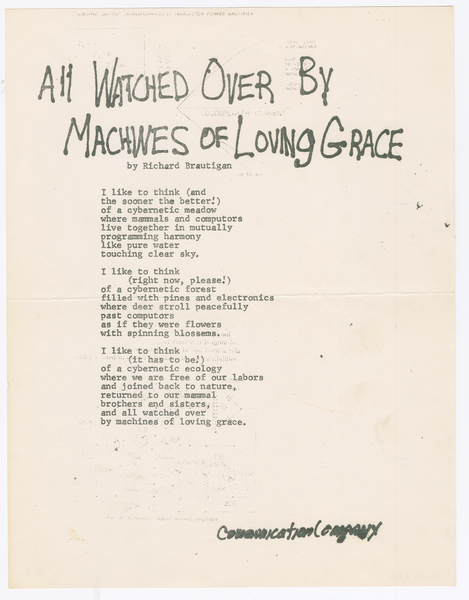
How did your family back east respond to what you were doing in San Francisco?
I would go home and talk to my parents and my friends, and they just thought we were being totally unrealistic. I truly believed—and I don’t know if this had to do with dope or what—that we were going into the Age of Aquarius and we were going to change the world.
There was a paper that I wrote at the time called “Living at Willard State in 1968.” I intended to send it to friends who lived in New York, telling them about what we did and why they should either send money, or come be with us. It was a very logical paper. I never sent it and I never showed it to anybody, until much later. I was trying to figure out what people were talking about at this house. The way I saw it was that if you get a bunch of people together, living communally, and if everybody picks a job, you’re gonna get everything covered because everybody has different interests. And that general idea could be expanded further outwards. That’s the thing I got to. To me, it was all just some kind of an experiment… But at the same time, we were doing it.
People at home would tell me, This isn’t going to work. But I really believed it was going to work, that we could make a difference. I look back at it now, I go… Why did I think that? I guess it’s youth. The optimism of a 25-year-old is so unrealistic. Even though the Vietnam War and everything was going on, it was much brighter then, in that way, than it is now. When I look back, I see all that hope. And then I look around and see how sad the world is now. It’s just unbelievable.
I have friends today that say, Oh yeah I experienced the Sixties, I dropped acid, and all these things. And then I reply, But you were working a full-time job, or being a housewife — you weren’t experiencing what I was experiencing. When I got to Willard Street in February ’68, it was like I had entered a Technicolor movie. I couldn’t believe how beautiful everything was. What I was involved in at Willard Street was being with the women, doing the day-to-day operations, and more importantly, finding ourselves. And I think almost all of us did find out who we were, and what we were supposed to do with our lives.
By August 1968, some people from Willard Street were moving out to Black Bear. I eventually went to live with the Hells Angels, but these people from Willard Street have been my best friends ever since. Later on, when our children came, Joanie Batman and I did a free school. And that’s really what I learned about myself from that time, that I liked teaching and being with kids.
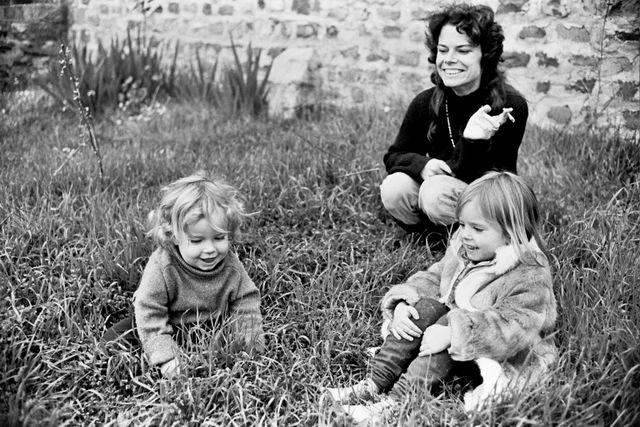
ENDNOTE
Vicki assembled the poems that made up Collected Poems of Lenore Kandel, published in 2012 with a gorgeous, haunting preface by fellow poet Diane di Prima.
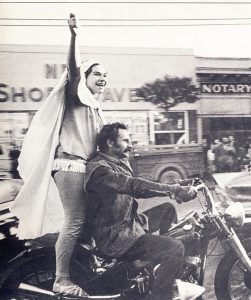
Beautiful. I thank both of you
LikeLike